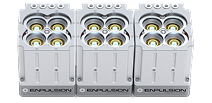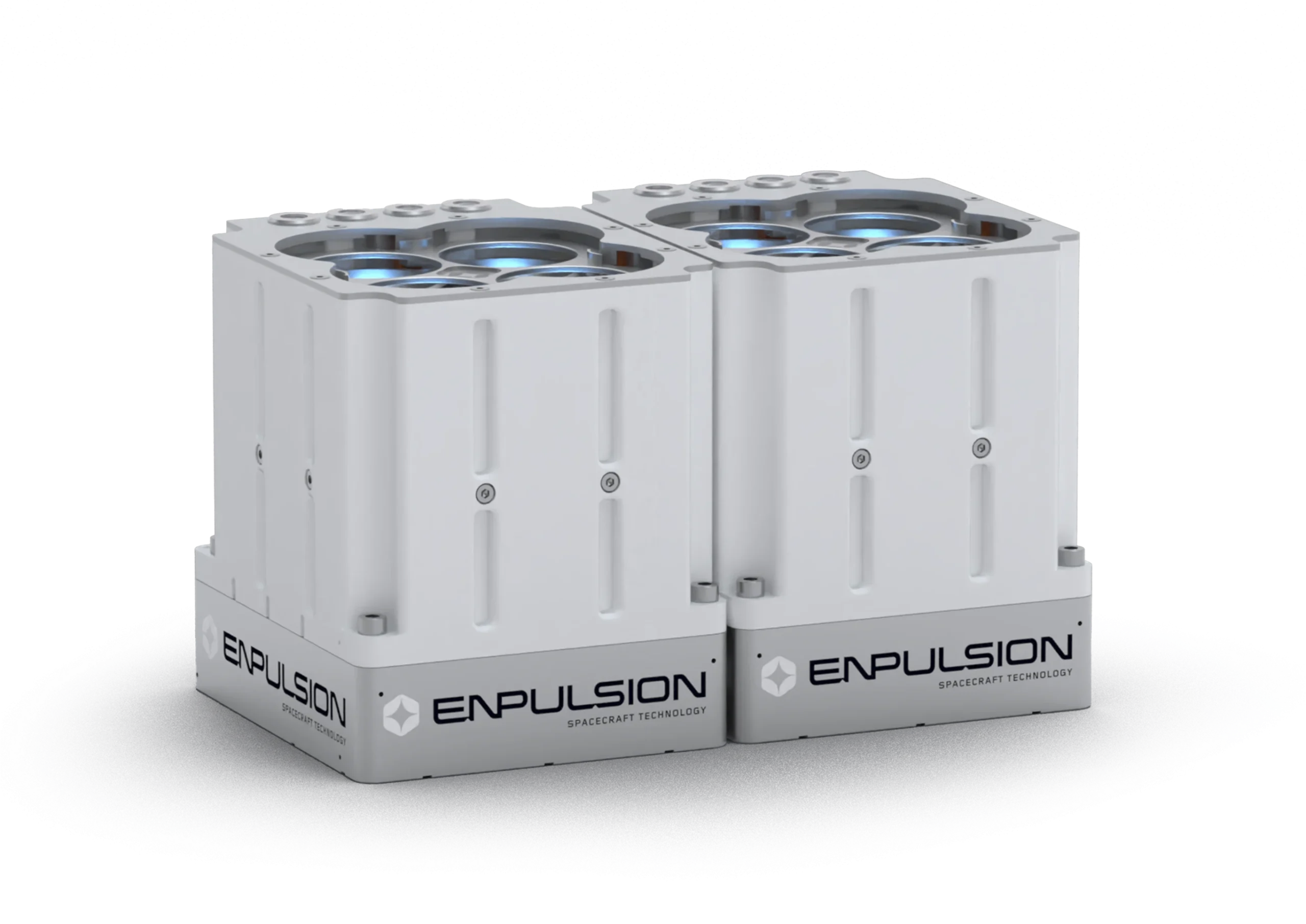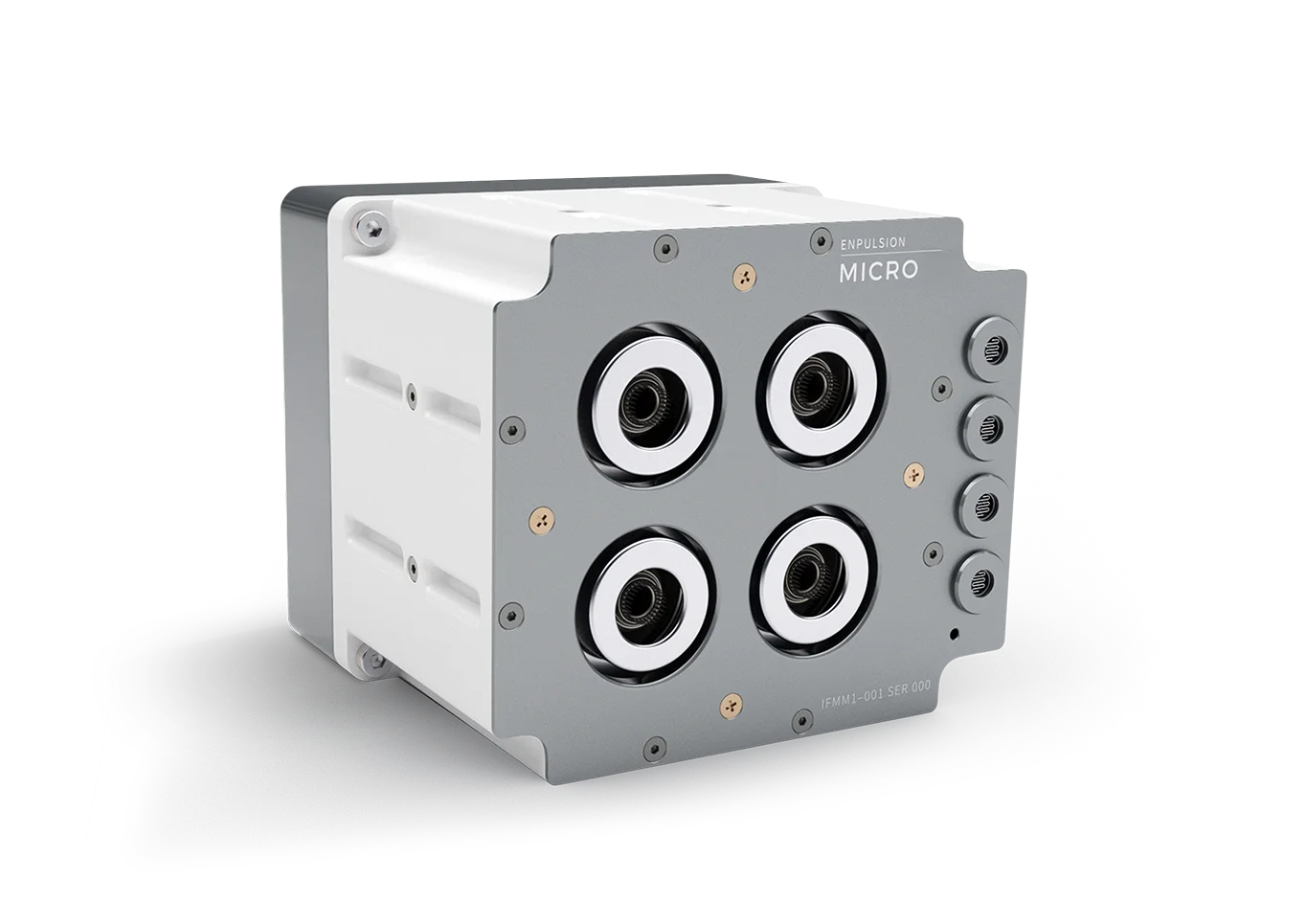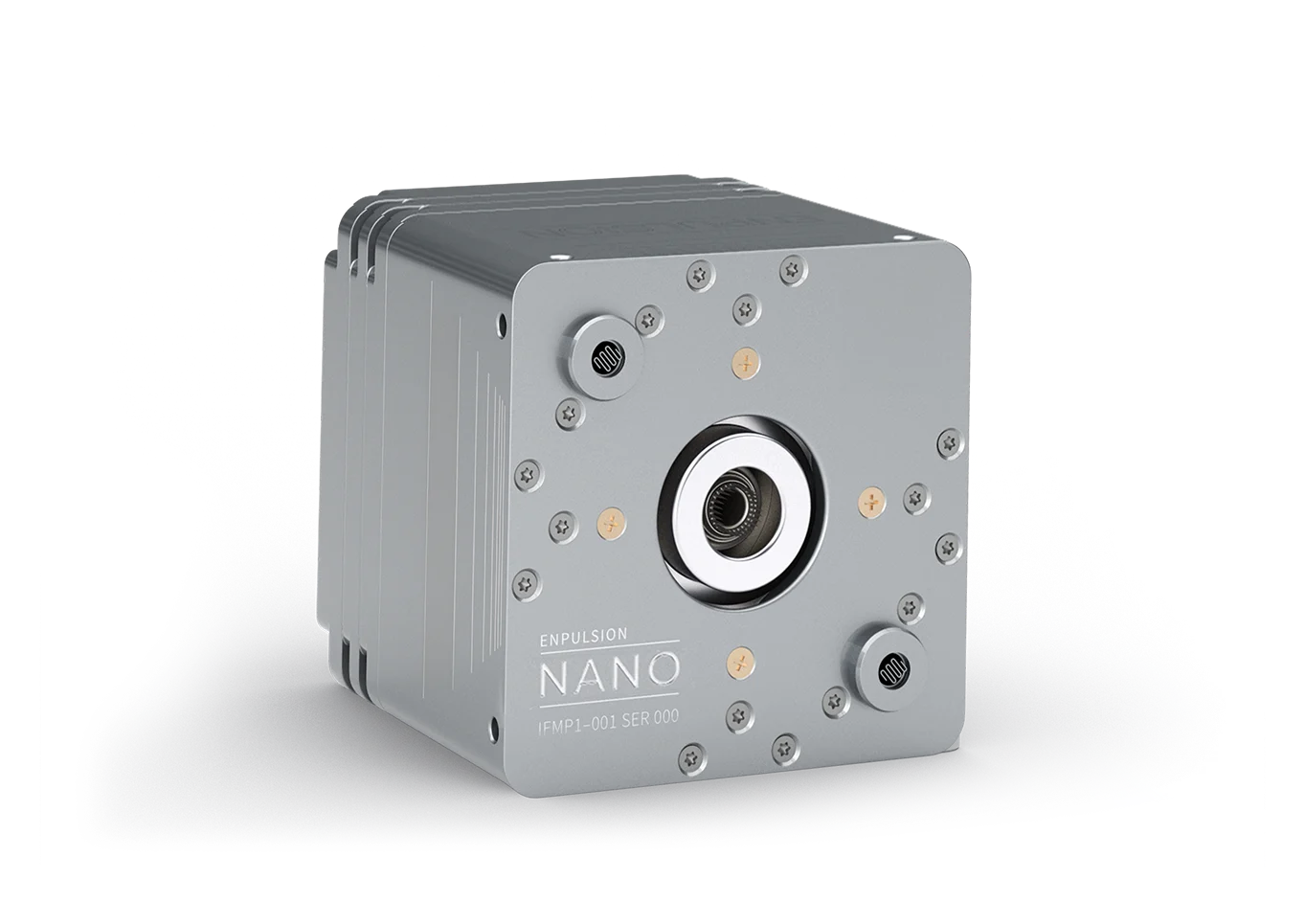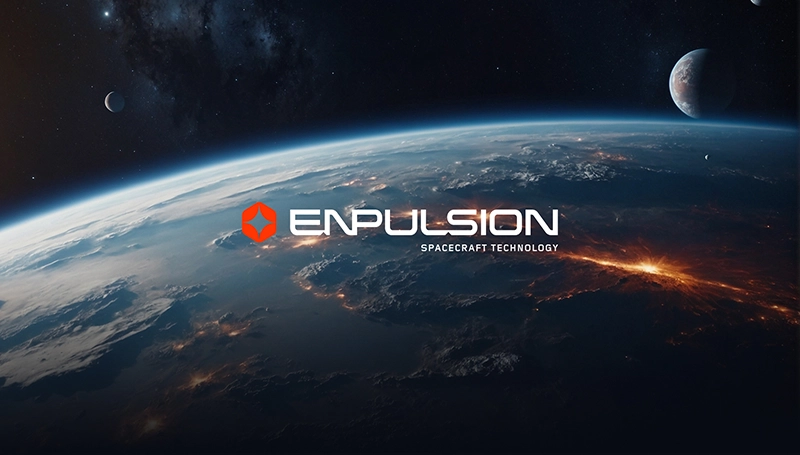Innovation & Technology
The Power of Precise Propulsion
FEEP Technology
Our proprietary Field Emission Electric Propulsion (FEEP) technology delivers superior performance, effortless scalability, and remarkable cost efficiency in a compact and easy-to-implement product.
FEEP — the core of Enpulsion’s innovation — uses an electrostatic field to produce specific impulse. Instead of relying on combustion, it uses a powerful electromagnetic field to ionize and accelerate liquified metal propellant, generating precise, adjustable thrust.
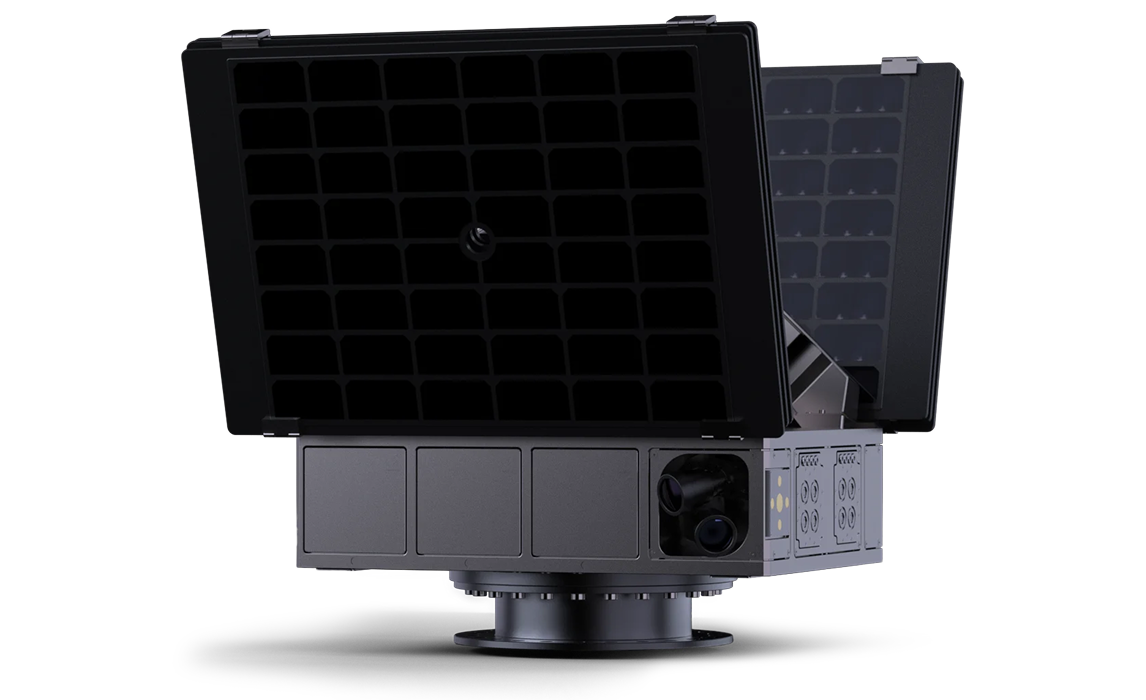
Next-Level Maneuverability
Once in orbit, the indium propellant is heated and liquified. Our advanced ion emitter extracts and propels charged particles, delivering a smooth, seamless balance of efficiency and control. With the ability to fine-tune thrust and specific impulse on demand, FEEP enables next-level maneuverability for the entire mission life.
*Image courtesy of EnduroSat
Indium Propulsion
Indium offers a compact, safe, and cost-effective propulsion solution.
Its high density reduces tank size, and it ships pre-filled, so you won’t have to worry about high-pressure storage or special launch waivers.
- Compact due to high density
- Thrusters can be shipped full
- Safe, non-toxic, and easy to handle
- Readily available at large scale
- RoHS and REACH compliant
| In Indium 114.82 | I Iodine 126.90 | Xe Xenon 131.29 | Kr Krypton 83.798 | |
|---|---|---|---|---|
| Density (In Flight Tank) | 7.3 G/CM³ | 4.9 G/CM³ | 1.6 G/CM³ | 0.6 G/CM³ |
| Pressure | 0 BAR | < 1 BAR | > 100 BAR | > 100 BAR |
| Toxicity | None | 0.1 PPM per 8H | None | None |
| Launch Waiver Requirements | None | Varying | Pressure Vessel | Pressure Vessel |
| Price of Propellant | $$ | $$ | $$$$ | $$ |
| Availability | ~1,000 Tons/year | Unlimited | ~100 Tons/year | ~100 Tons/year |
Quality and Precision
Enpulsion FEEP technology — innovative propulsion proven in orbit
Flight Heritage
Enpulsion’s legacy Nano thruster first entered orbit in 2018, and since then 250 propulsion systems have demonstrated exceptional reliability and performance with 420 accumulated years of on-orbit operations.
Mature Technology
Developed over 30 years under ESA contracts, FEEP technology has over 1,000 tested emitters and a lifetime test surpassing 30,000 hours with no degradation of emitter performance.
Controllable Specific Impulse
Delivering up to 60% ionization efficiency, our emitters provide high specific impulse and precise ISP control, ranging from 1,000s to 6,000s.
Debris Safety
Our thruster operates unpressurized with no stored chemical energy, eliminating explosion risks and preventing debris generation in the event of a collision. This enables safer, more reliable space operations.
Enhanced Launch Safety
Our technology has no moving parts, and the propellant remains in a solid state at launch. Without pressurized tanks or reactive propellants, it eliminates containment risks and simplifies handling.
Instant Thrust
FEEP emission operates electrostatically from a Taylor cone with a millisecond response time. In hot-standby mode, the propellant remains liquefied, providing near-instant activation, limited only by electronic controls.
Dynamic Control
Thrust is regulated by electrode voltages, allowing precise control across the entire range with micro-Newton accuracy and minimal thrust noise.
Safe, Stable Propellant
Our emitters use indium, a non-toxic, non-reactive and non-radioactive metal as propellant, with negligible evaporation even in vacuum at high temperature.
Seamless Integration
FEEP thrusters use a passive design with no hazardous materials and an unpressurized solid propellant at all stages. Delivered ready-to-fly, they enable quick and simple integration.
